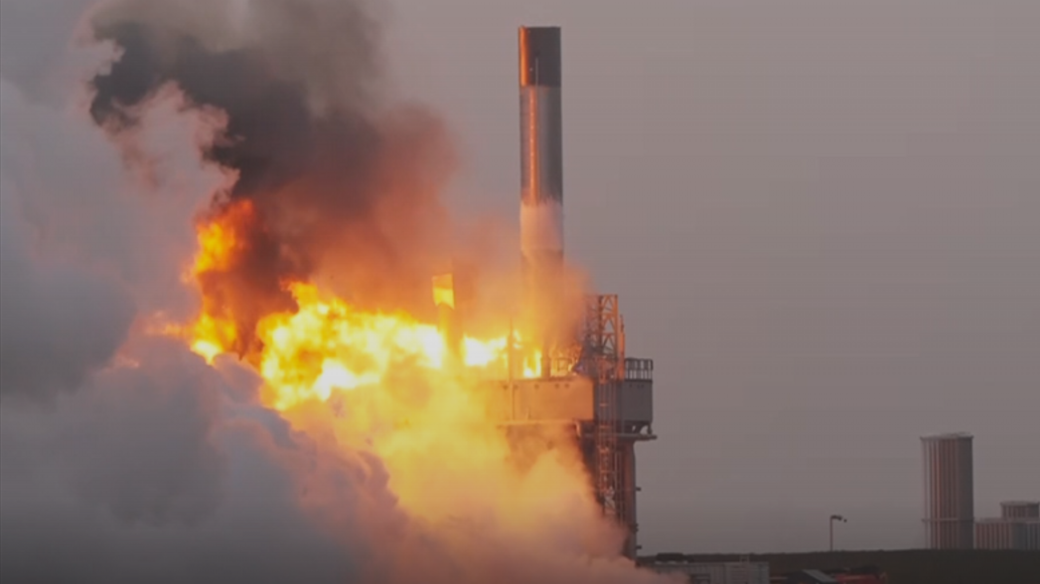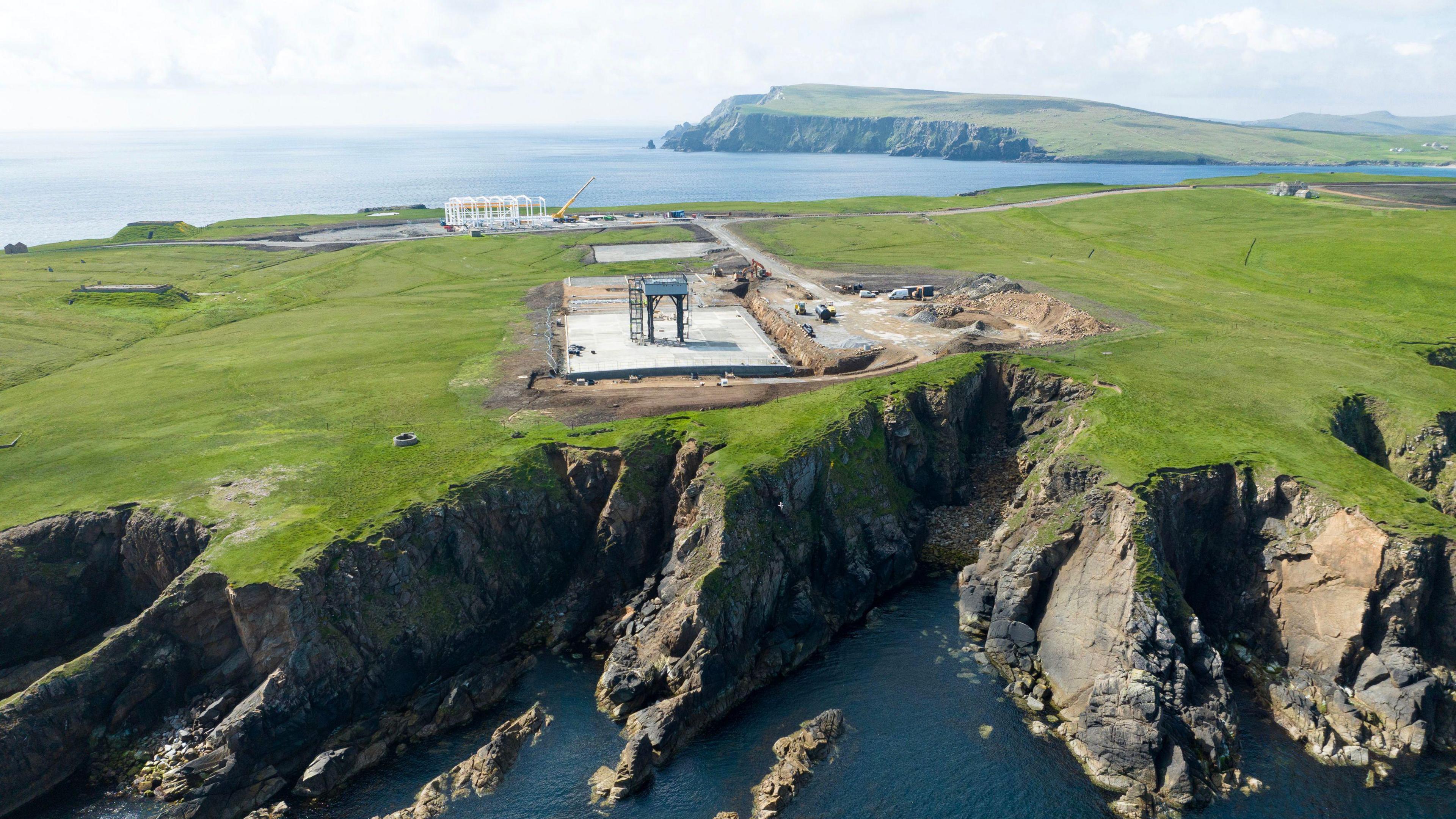Engine explodes during rocket test at Shetland spaceport
Watch: Rocket engine at Shetland spaceport explodes
- Published
A rocket engine has exploded during a launch test at the UK's new spaceport in Shetland.
Large flames and huge clouds of smoke could be seen coming from the bottom of the rocket before it went up in fire.
The test was being carried out on the island of Unst by German company Rocket Factory Augsburg (RFA), who are hoping to send rockets into orbit from the SaxaVord spaceport later this year.
No-one was injured in the explosion and the launch pad has been "saved" with the situation "under control" according to officials.
RFA says it is now working with the spaceport and the authorities to find out how the incident happened.
First rocket test at UK's spaceport a success. Video, 00:00:45
- Published22 May 2024
Kids officially open UK's first spaceport
- Published31 May 2024
Shetland prepares for UK's first vertical rocket blast-off
- Published18 December 2023
What happened?

In May this year, German company RFA successfully carried out the first test at the Saxavord spaceport.
This latest rocket test was part of a number of trials due to be carried out before the official launch of the UK's first vertical rocket into space later this year.
RFA says the launchpad was "saved and is secured" and that the "situation is under control."
A spokesman said: "This was a test, and test campaigns are designed to identify issues prior to the next stage.
"Our goal is to return to regular operations as soon as possible."
What is the SaxaVord spaceport?

SaxaVord is a spaceport, which is like an airport but for rockets.
There are a few of them in the UK; there's one in Cornwall, and another on the Scottish mainland.
But none have successfully launched anything into space yet.
SaxaVord hopes to be the first, and will be allowed to send up to 30 rockets a year.
These will be used to take things like satellites up into space.
The first tests successfully took place there earlier this year and it's hoped rockets will blast off for real later this summer.
SaxaVord Spaceport CEO Frank Strang said it's been "a long hard journey" to get to a point where they'd be ready to launch, but wanted to do something special to celebrate the hard work his team had put in to get there.
The UK government has also invested £10 million in the project.
